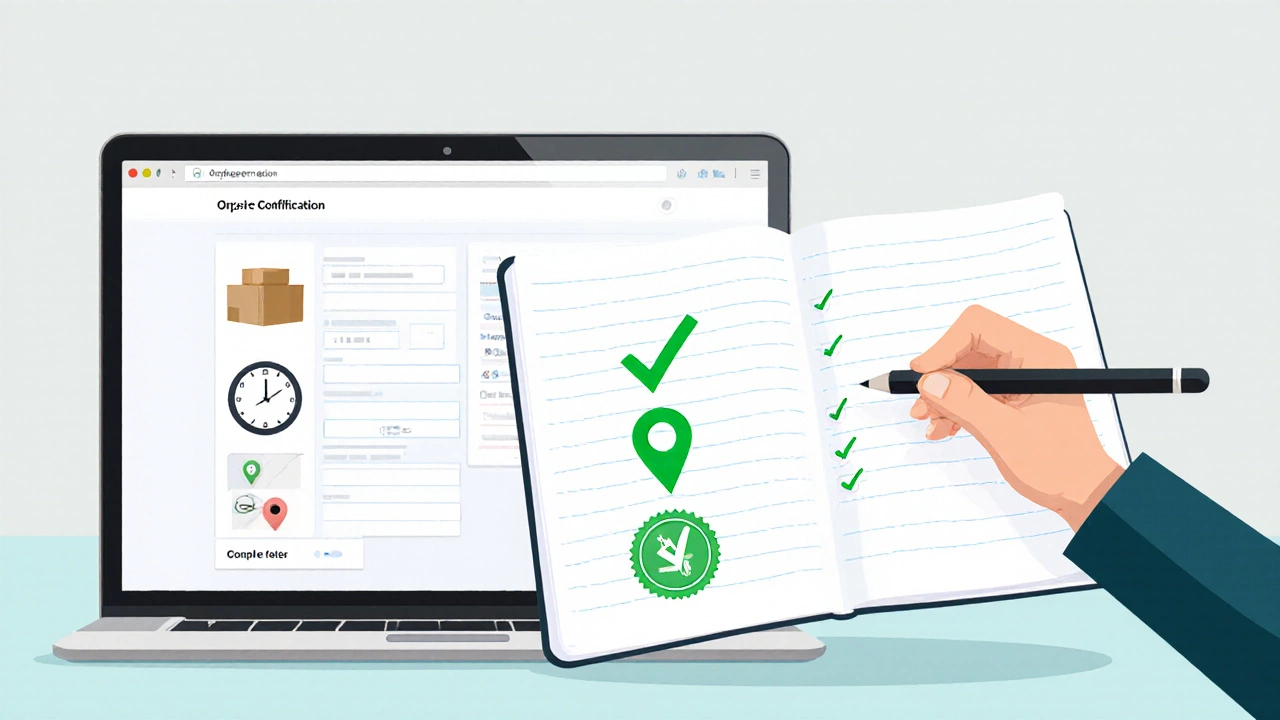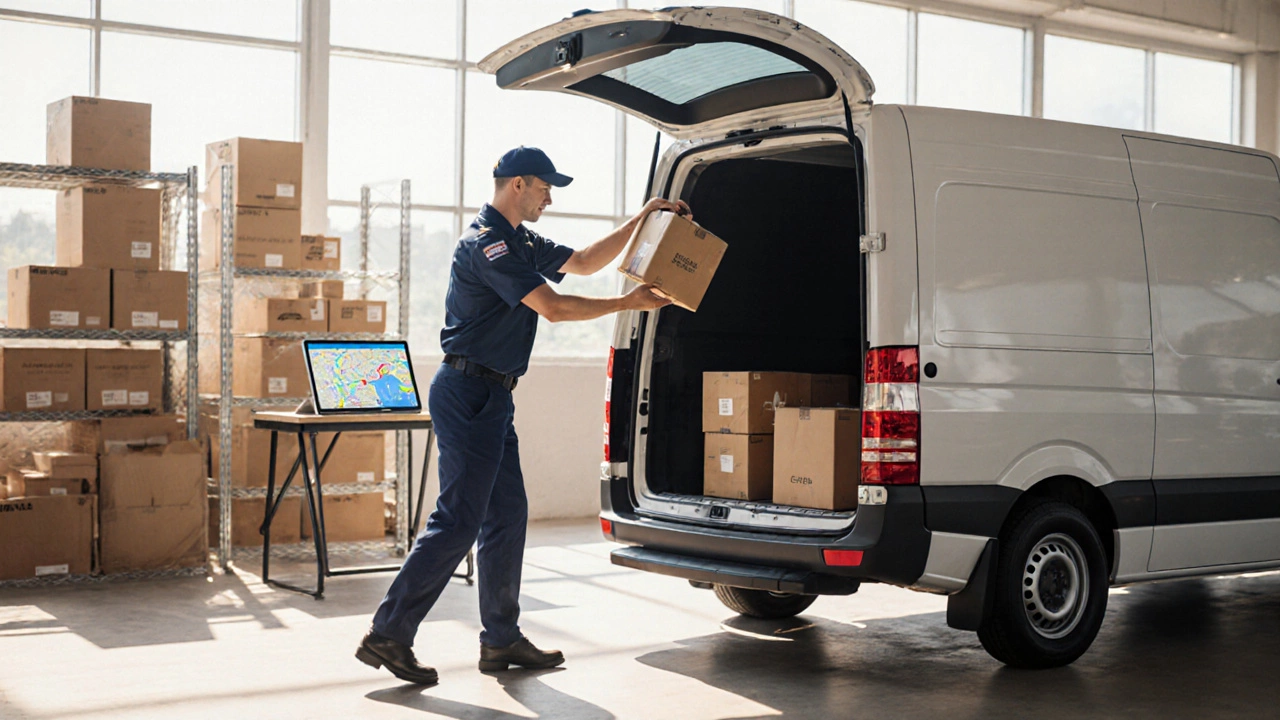Express Delivery ROI Calculator
Calculate Express Delivery Value
Financial Analysis
Note: Based on UK market data from 2024-2025 with average express delivery rates of 92-97% and standard delivery rates of 98-99%.
When you click “next‑day” or “same‑day” at checkout, you expect the package to vanish from the warehouse and appear at the door almost instantly. But does express delivery truly live up to that hype, or is it just clever marketing? This guide breaks down the nuts and bolts, looks at hard data, and shows you when the service actually pays off.
What Express Delivery is a premium shipping option that guarantees delivery within a tight time window, often same‑day or next‑day, using dedicated logistics resources looks like on paper
Express delivery isn’t a single product; it’s a service level offered by Courier Services companies that specialize in moving parcels quickly, often with their own fleet and network of local hubs. The key ingredients are:
- Dedicated pickup windows (often within 2‑4hours of order).
- Optimized routing algorithms that prioritize speed over cost.
- Real‑time Tracking Systems digital platforms that provide minute‑by‑minute location updates and delivery predictions.
- Service‑Level Agreements (SLA formal contracts that define guaranteed delivery times and compensation if the promise isn’t met).
These components turn a regular shipment into a promise that customers can measure.
Real‑World Performance: Speed, Reliability, and Numbers
Speed is obvious-most express packages hit the road within an hour of order. The harder question is reliability. Industry surveys from 2024‑2025 (e.g., the UK Courier Benchmark) show an On‑time Delivery Rate percentage of parcels that arrive within the promised window of 92% for same‑day services and 96% for next‑day services. That sounds solid, but the devil is in the details:
- Urban vs. Rural: In dense city centers like Liverpool, on‑time rates hover around 97%, while remote postcodes can dip below 85%.
- Peak Seasons: During Black Friday, rates can fall 6‑8% across the board.
- Weather Impact: Heavy rain or snow adds an average 15‑minute delay per leg, but most couriers have contingency routes to keep the overall window intact.
In short, express delivery works well when the network is robust and the distance short. The farther the parcel travels, the more variables creep in.
Cost vs. Value: Is the Premium Worth It?
Express shipping typically costs 1.5‑3times the price of standard ground. For a 2‑kg parcel within the UK, you might pay £8‑£12 for same‑day versus £4‑£5 for two‑day. The ROI depends on two factors:
- Customer Lifetime Value (CLV): If a fast delivery nudges a customer to order twice a year instead of once, the extra £7 per order can be recouped quickly.
- Product Type: Perishables, urgent medical supplies, or high‑ticket electronics benefit most from speed.
When you map cost against potential revenue boost, the break‑even point for most e‑commerce sellers sits at a CLV of around £100‑£150 per customer.
Best‑Fit Scenarios: When to Deploy Express Delivery
Not every order deserves a premium charge. Here’s a quick rule‑of‑thumb matrix:
| Attribute | Express Delivery | Standard Delivery |
|---|---|---|
| Typical Delivery Window | Same‑day or next‑day (4‑24hrs) | 2‑5days |
| On‑time Rate (UK avg.) | 92‑97% | 98‑99% |
| Cost per 2kg parcel | £8‑£12 | £4‑£5 |
| Best Use Cases | Perishables, urgent B2B parts, high‑value gifts | Clothing, books, bulk items |
Notice the reliability dip for express-if you can tolerate a small chance of delay, the speed win often outweighs it.
Common Pitfalls and How to Avoid Them
Even the best courier can stumble. Here are three frequent mistakes and quick fixes:
- Skipping Address Verification: Inaccurate postcodes are the #1 cause of missed SLAs. Use an API that validates UK postcodes at checkout.
- Over‑promising in Remote Areas: Some couriers limit express zones to a 30‑mile radius. Clearly state any geographic exclusions on product pages.
- Ignoring Cut‑off Times: A 2pm order might miss the same‑day window. Show a live countdown timer that updates based on the shopper’s timezone.
Addressing these issues up front can push your on‑time rate closer to the industry average.

Quick Checklist Before Offering Express Delivery
- Map your top‑selling SKUs against delivery urgency.
- Confirm your chosen courier’s express coverage map.
- Integrate real‑time tracking into your order confirmation email.
- Publish clear cut‑off times and geographic limits.
- Set up an SLA refund trigger for missed deliveries.
Tick these boxes, and you’ll give customers a realistic promise they can trust.
Frequently Asked Questions
How accurate are the promised delivery windows?
Most UK couriers hit their promised window 92‑97% of the time for same‑day services. Accuracy drops in rural areas and during peak seasons, so it’s wise to add a small buffer in your customer communications.
Can I offer express delivery internationally?
International express is available, but on‑time rates fall to 85‑90% and costs rise sharply (often 4‑5× standard). It’s best suited for high‑value or time‑critical items like medical equipment.
What happens if the courier misses the SLA?
Most couriers offer a refund or credit equal to the express fee if they miss the promised window, provided you’ve documented the breach. Check the provider’s SLA clause before signing up.
Is tracking really real‑time?
Tracking updates typically refresh every 5‑15 minutes. Some premium services push GPS coordinates directly to the consumer app, offering near‑instant visibility.
Should I charge extra for express delivery?
Yes-most shoppers expect a separate fee for the speed premium. Transparent pricing (e.g., “£9.99 for same‑day”) reduces cart abandonment and sets realistic expectations.


